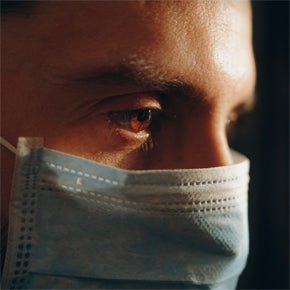
CO2Meter is proud to work with a variety of researchers, all in search of discovering solutions and furthering advancements across multiple fields and applications.
This year, CO2Meter collaborated with Phil Bresnahan, a research and development engineer interested in gaining further analysis of CO2 buildup and mask respiration. Although Phil's main passion lies in chemical oceanography, with the recent trend in regards to masks and carbon dioxide hypoxia Phil decided he would conduct further research on the topic. In doing so, Phil conducted an analysis using our CozIR®-LP2 5000ppm CO2 Sensor. We were lucky enough to come across his research on the web and discuss his analysis and findings further.
In gaining Phil's feedback he concluded, "I discovered first that the air inside a mask becomes pretty hot and humid and although the sensor can gauge precise measurements, the COZIR did not have a humidity sensor so I will further redo my research with a pack to slow down the response.”
CO2Meter: Phil, could you tell us a little bit about your project. How did you get started, and what was your main mission, or what sparked your interest?
Phil: "With all of the publicity that mask-wearing has garnered in the past couple months, and especially the complaints people have had about masks, I wanted to take some measurements to see what effect a mask had on CO2 buildup. I had a COZIR®-LP2 5,000ppm CO2 Sensor - so I thought I would make some quick measurements for myself."
CO2Meter: In your experience what has been the biggest hurdle when choosing a specific sensing technology?
Phil: "The cost/accuracy tradeoff creates some challenges but also opportunities in my field of chemical oceanography. Of course, we would prefer to have very accurate, very inexpensive sensors, however, we consider to make the most of less expensive, semi-accurate technologies. In regards to oceanography, we tend to want something that is accurate, precise, and stable at >5ppm CO2."
CO2Meter: What brought you to the chosen sensor technology?
Phil: "Relative ease of use (easy hardware and firmware integrations) and low price point."
CO2Meter: Tell us about your experience with CO2Meter products (if any) and your background if it pertains to gas detection, monitoring, or analysis?
Phil: "I've used a handful of CO2Meter sensors over the past ten years, mostly on exploratory/educational projects. I focus on the marine CO2 system - things like partial pressure of CO2 in seawater and pH, both of which are changing as a direct result of the human-causes increases in atmospheric CO2."
CO2Meter: Has anyone in your company or those around you experienced any unfortunate CO2 exposure incidents?
Phil: "The entire planet is experiencing unfortunate CO2 exposure on a daily basis! I work on environmental health, not (explicitly) human health, but the two are deeply interrelated. Atmospheric increases in CO2 concentrations are causing all sorts of issues due to warming and ocean acidification and the whole planet is now being impacted by those. Things like strengthened hurricanes, more severe droughts and floods, and just plain bizarre weather are some of the results of increased CO2 levels and, even if you haven’t had to evacuate yourself or suffer from the heartbreaking loss of life or property, these things impact one way or another."
CO2Meter: With the upcoming trends and technologies emerging, what are a few trends that have become more abundant in your industry or from the research you have conducted?
Phil: "The explosion of easy-to-use microcontrollers and network integrations have brought the Internet of Things (IoT) into the mainstream of oceanography. Oceanographers have used satellite-networked sensors and platforms for decades, but only recently have the technologies become simple enough for broader applications."
In addition to gaining feedback from Phil, CO2Meter continues to assist in his research to supply humidity/temperature sensors to further his research.
Across the world, the continued trend in regards to mask-wearing and hypercapnia, due to breathing in exhaled CO2, still remains a large issue. CO2Meter has been diligent in providing additional education on the topic and aiding in solutions to support research and discoveries.
A small study was also conducted prior to Phil's in 2006, which looked at healthcare workers wearing N95 masks during the SARS epidemic. It concluded that the use of N95 masks could result in headaches, yet individuals could not suffer severe symptoms at higher levels of CO2 - making it very unlikely that the mask would cause hypercapnia.
For more information on CO2 sensing solutions and technologies contact us today.






